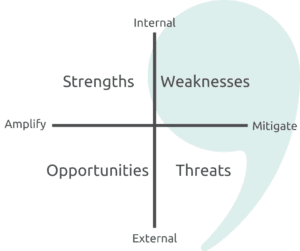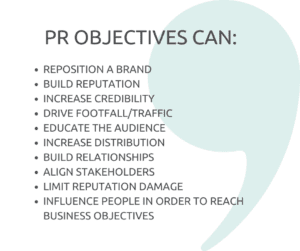
How to create a strategic PR plan
PR strategies are triggered by internal and external needs, events, issues or trends. They can set a campaign up for success but, like anything, if done incorrectly or incompletely then it can do more harm than good.
Junior Account Executive, Chloe Price, recently attended a CIPR webinar, learning about five common pitfalls of PR strategy planning and how to avoid them.
1. A bad brief
A bad brief is hard to describe but can be normally defined as one which is too short and lacking detail. The brief informs the entire approach, so it is crucial to be thorough in order to create a great strategy. It should include clear links to business goals, PR objectives, audience and messages, budget and timing and an agreed way to measure success.
Don’t just accept what you’re given, ask questions to dig deeper into the brief and get all the information you need. Break down each of the components so you have a clear outline to create a strategic PR plan. Ask, what the KPIs are and why they are the chosen KPIs? What does success look like? How can you measure it?

2. Having no insights
Much like a bad brief, a PR professional will struggle to create a strategic plan without insights. Insights guide us and highlight what we need to focus on in order to reach success, they can also spark creative ideas. These insights don’t need to be hard numbers but data is very helpful as it is fact-based and can be easily measured, and therefore, can be used for objectives and feed into KPIs.
SWOT analysis is one technique we use in strategic planning, allowing a person or an organisation to identify strengths, weaknesses, opportunities and threats. It allows the team to highlight what they already know (knowledge gaps), what they need to amplify and what they need to mitigate.

3. Unclear objectives
Objectives can often be overlooked but clear PR objectives are critical to help measure and evaluate success. Objectives should consider awareness, attitudes and actions – what do we want people to know, feel and do?

They should be SMART (specific, measurable, attainable, relevant and timely) and linked to wider business objectives, such as ones relating to financial performance, growth and purpose. Never be afraid of having a long, detailed objective – this is preferable over one that is too brief.

4. Targeting everybody instead of key stakeholders
Quite often, organisations try to target ‘everybody’ instead of their key stakeholders. Whether they are direct or indirect, active or passive, known or unknown, they need to be identified and specified.
Different messaging and means of comms and engagement for each stakeholder. Some stakeholders take priority over others, for example, they have a lot of power and interest. It’s also worth noting that they can move groups as time goes by.

5. Confusing tactics and strategy
Tactics and strategy are not the same, despite often being mistaken for each other. Strategy is how you’ll achieve your objectives. Tactics, on the other hand, are the actions you will take and will be achieved by specific techniques and tools. These will always follow the strategy.
For example, the strategic imperative might be to educate a specific audience sector. Tactics might include an informative seminar, a social media campaign with informative graphics or video, or perhaps a series of advertorials explaining the facts. 
Public relations can do many things, for example, build trust, or improve brand awareness, but the first step must be a professional PR strategy followed by a measurable campaign plan.
If you’d like to tell your story, share your message and build your reputation, get in touch with me at chloe.price@black-vanilla.co.uk or on 01481 729 229.